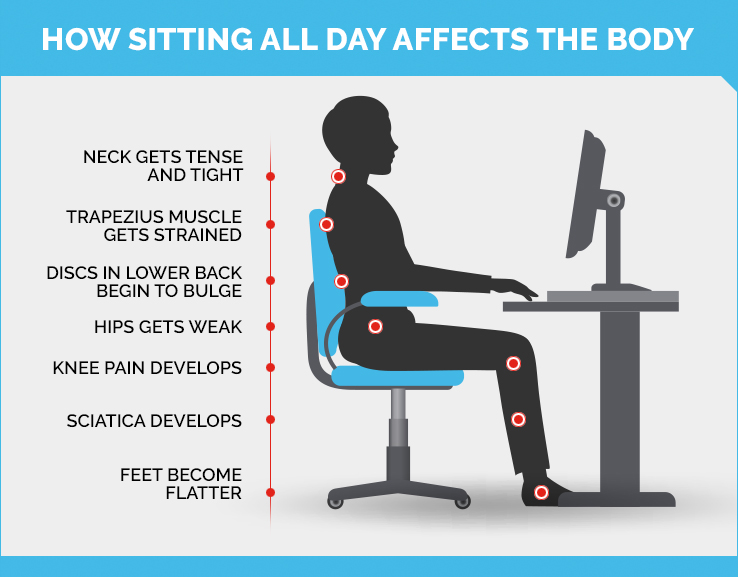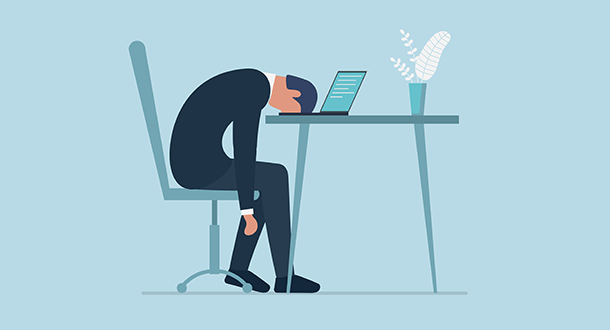Research has linked sitting for long periods of time with a number of health concerns. They include obesity and a cluster of conditions — increased blood pressure, high blood sugar, excess body fat around the waist and unhealthy cholesterol levels — that make up metabolic syndrome.

Sitting for extended periods of time can lead to a range of health risks, including:
- Poor Posture: Sitting for long periods of time can lead to poor posture and alignment of the spine, which can result in pain and discomfort.
- Obesity: Sitting for long periods of time can lead to weight gain and obesity, as it reduces the number of calories burned throughout the day.
- Cardiovascular Disease: Sitting for extended periods of time can increase the risk of developing cardiovascular disease, as it can lead to a decrease in blood flow and an increase in blood pressure.
- Type 2 Diabetes: Sitting for long periods of time can increase the risk of developing type 2 diabetes, as it can lead to insulin resistance.
- Muscle Degeneration: Sitting for extended periods of time can result in muscle degeneration, as it reduces the amount of physical activity and movement that the body is used to.
- Increased Risk of Certain Cancers: Some studies have suggested that sitting for long periods of time can increase the risk of certain types of cancer, such as colon, breast, and endometrial cancer.
- Mental Health Problems: Sitting for extended periods of time can also impact mental health, leading to depression and anxiety.

To mitigate these risks, it is recommended to take regular breaks to stand up and move around, engage in regular exercise, and maintain good posture while sitting.
Overall, research seems to point to the fact that less sitting and more moving contribute to better health. You might start by simply standing rather than sitting when you have the chance. Or find ways to walk while you work. For example:
- Take a break from sitting every 30 minutes.
- Stand while talking on the phone or watching television.
- If you work at a desk, try a standing desk — or improvise with a high table or counter.
- Walk with your colleagues for meetings rather than sitting in a conference room.
- Position your work surface above a treadmill — with a computer screen and keyboard on a stand or a specialized treadmill-ready vertical desk — so that you can be in motion throughout the day.


